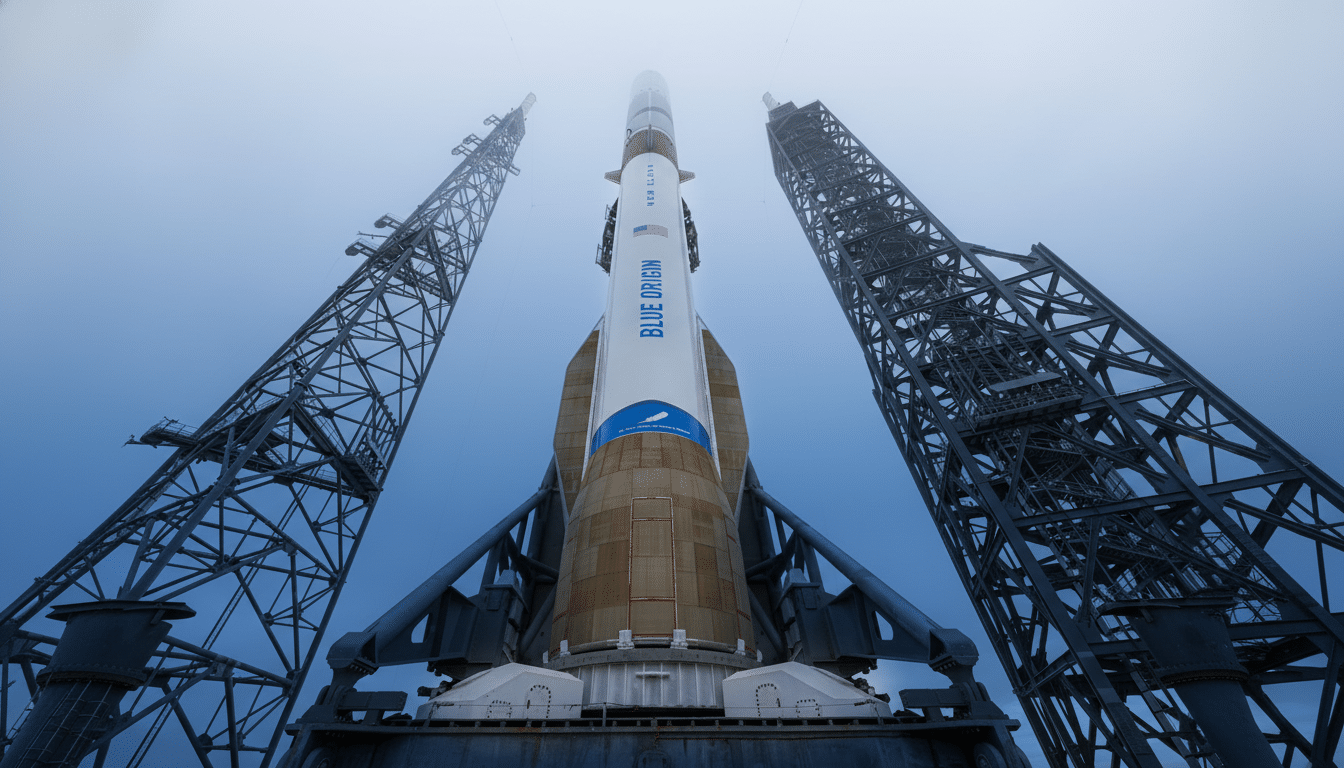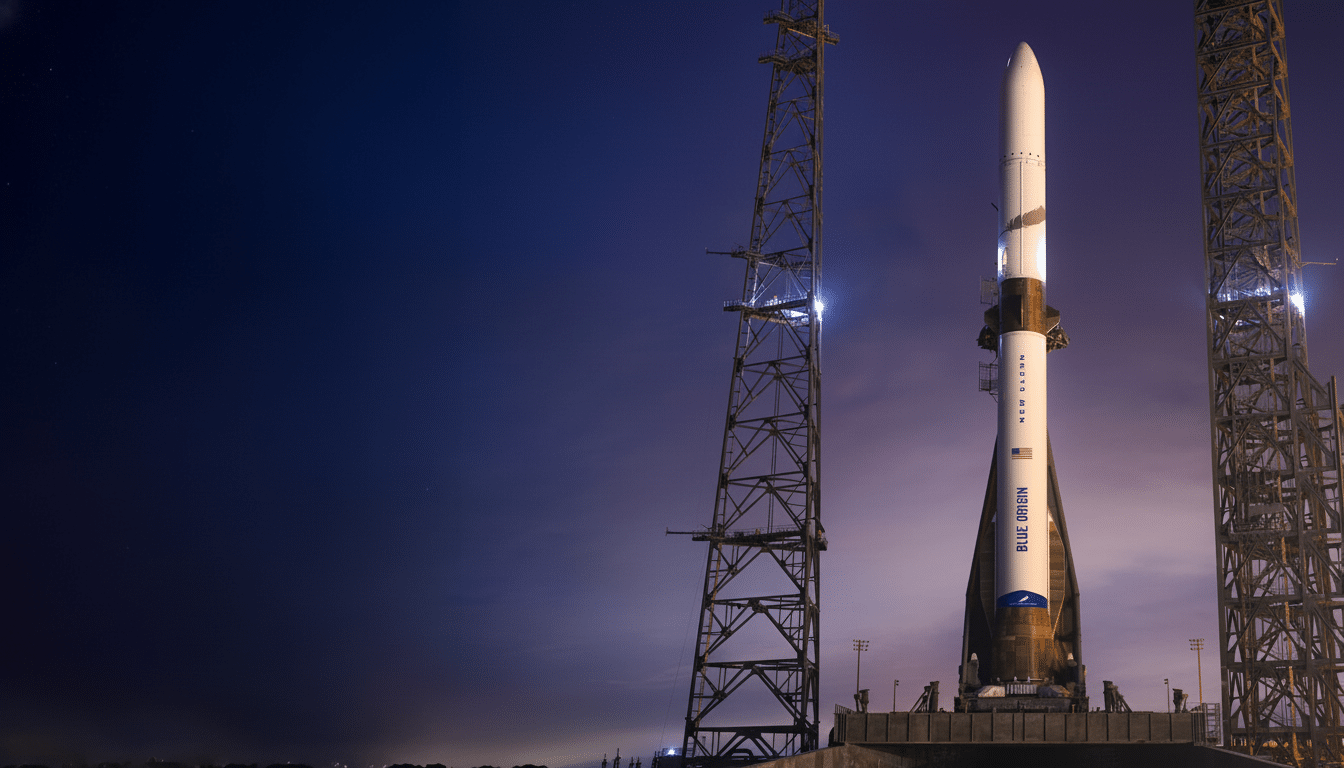Blue Origin is gearing up to return its New Glenn super-rocket to the launch pad for a second flight, an important milestone intended to prove out reliability on a mission now carrying paying customers. The heavy-lift booster will blast off from Launch Complex 36 at Cape Canaveral with range support from Space Launch Delta 45, and, above all, the commercial space office of the Federal Aviation Administration.
Why the Second New Glenn Flight Matters for Reliability
New Glenn’s maiden flight demonstrated that much of the vehicle’s promise was real when it lofted its upper stage to orbit, albeit before its expendable booster was lost on descent attempting a sea landing. This follow-up shot is supposed to test those fixes, shave down the descent-and-landing profile in detail, and set a believable cadence for a spacefaring rocket built around reusability. Reliability is the payload here—transitioning from a test article to a customer workhorse mission is where engineering margins get tested in an operational context.

Blue Origin has long touted New Glenn as a workhorse for science, national security, and commercial fleets. To win that future will require clean flights, predictable turnarounds, and a growing recovery system. The company has said the first stage is designed to be reused 10 times, with an aspiration for up to 25 reflights, a milestone that could substantially alter Falcon Heavy economics for heavy payloads.
What New Glenn Will Launch on Its Second Mission
The star attraction is a pair of twin ESCAPADE spacecraft from NASA, two small satellites designed to investigate how the solar wind interacts with Mars’ magnetosphere. As part of it, the duo will perform a two-spacecraft investigation—from unique Mars orbits—to characterize particle loss processes in the Martian atmosphere and illustrate how the planet interacts with the solar wind. The mission’s two-craft design is a poster child for rideshare efficiency and mission robustness.
There’s also a Viasat technology demonstrator that is a small payload to test systems for future broadband constellations and high-throughput satellites. “Flying a mixed manifest on New Glenn is yet another example of how we are designing this system to be the most flexible and capable heavy-lift vehicle in the market.” New Glenn’s 7-meter fairing provides significantly more usable volume than any other launch vehicle, offering superior value for customers—including the growing list of innovative payloads announced with today’s mission.
Inside the Mega-Rocket: New Glenn’s Design and Engines
New Glenn rises to nearly 98 meters and packs seven BE-4 engines in its flyback, reusable first stage, burning liquefied natural gas with liquid oxygen. For high-efficiency orbital work, the upper stage is equipped with a vacuum-optimized hydrogen engine. And with a 7-meter diameter, the payload fairing offers approximately double the volume capacity compared to 5-meter versions commonly used for similar-class missions, providing excess capacity for large observatories, stacked satellite configurations, and larger payloads bound for deep space.

In the heavy-lift arena, New Glenn’s stated capabilities would put it in the category with rockets such as Falcon Heavy and eventually next-generation national launch vehicles. Blue Origin’s manufacturing philosophy is dime-store vertical integration of propulsion—BE-4 also fuels ULA’s Vulcan Centaur—and vertically integrates a large part of Blue Origin’s supply chain in an area that has long been a chokepoint for competitors.
What to Watch During the Launch and Booster Landing
Important milestones will be a clean pass through maximum aerodynamic pressure, a well-executed main engine cutoff and stage separation, and timely ignition of the upper stage. For the booster, the macho moments come after that, during the entry burn and thermal and structural loads toward the end of its journey as it packs back into the atmosphere, and a landing burn downrange on an ocean platform. Any adjustments in guidance, navigation, and control during descent will be closely watched as landing reliability indicators.
For ESCAPADE, launch success translates into an accurate deployment and successful upper stage performance to place the spacecraft on the necessary trajectory. NASA teams will check spacecraft health and learn more about the release dynamics while evaluating initial telemetry before beginning cruise mode. With multi-burn and intricate timing, this is an extremely challenging profile, which really shows the value of high-energy upper stages for novel interplanetary rideshare opportunities.
The Stakes for Blue Origin’s Future Missions and Markets
A successful second flight would be more than just a win; it would also reinforce Blue Origin’s case for greater involvement in NASA science campaigns, commercial mega-constellation launches, and national security missions that are to be purchased through the Space Force launch-procurement plan. The company’s big pad at LC-36 and its planned fleet of reusable boosters are designed for high throughput—which is just what it takes to compete for the kind of repeat business, such as future batches of Amazon’s Project Kuiper satellites.
Spaceflight is an accumulation game: of flight data, process discipline, and a public track record. With New Glenn, Blue Origin has entered that phase of a new rocket in which each mission either adds to confidence or extends questions. If the rocket performs this time—putting payloads on the correct trajectory and nailing the booster’s return—then the company’s vision, long-term, of a high-cadence heavy-lift reusable system becomes much less hypothetical, moving off of PowerPoint slides.

